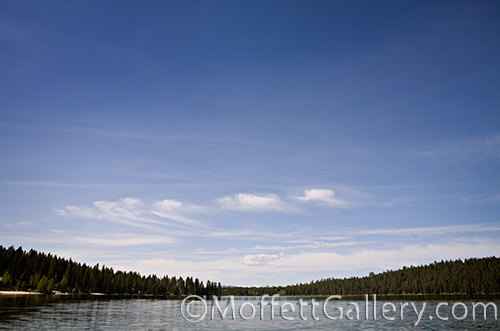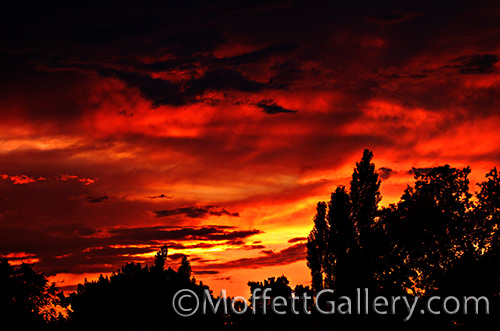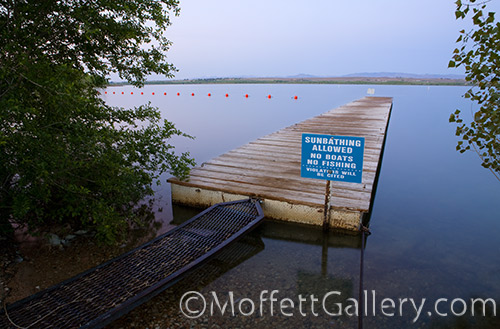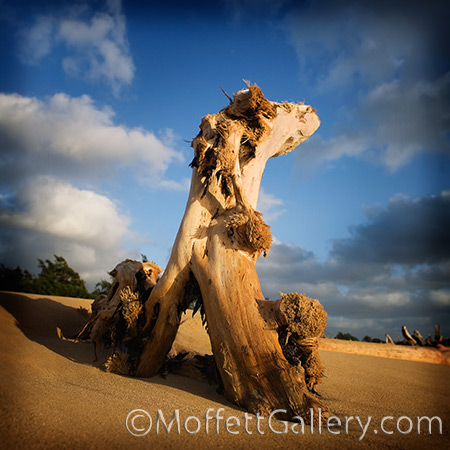by tmoffett | Jun 25, 2010 | Color, Composition, Landscape, Photographic Philosophy

Into the Unknown
Wednesday evening about an hour before sunset I went out to the lake. I am working on a personal project where I am documenting, fine art fashion, Lake Lowell. I am a big believer in photographing your local area. Don’t get me wrong, I love to travel and photograph other locations as well, however I feel that we can create more intimate and meaningful images of areas that we frequent often. Lake Lowell has become my personal, local photographic project.
When I first started this project, it was a challenge. Many of the local don’t regard Lake Lowell as a very attractive place, so I needed to get beyond that and show my vision of what we have in our own backyard. I now get very different reactions when the locals view these images. In fact, just last night, my son looked at an image that I shot Wednesday and asked, “Is that in Oregon?” He was surprised when I told him I had just shot the image out at the lake the night before.
This image, “Into the Unknown,” is an image just created the other night while out at the lake. I had shot this staircase before, but was not happy with what I had done. An advantage to being local is that I can go back until I get what I want. The light was much better this time and the brush was also better. Just enough green in the midst of the drying weeds to create interest. Offsetting the stairs a bit helped as well. Good use of the rule of thirds. Last time I shot it symmetrically, and I didn’t like it at all. It was too predictable and boring. This is much more interesting.
by tmoffett | Jun 24, 2010 | Color, Composition, Landscape, Photographic Philosophy

Payette Lake
Simplicity. It is what I strive for in my photographs. It is how I see. It is also a concept that is very hard to teach young photographers. This is possibly due to the fact that the world today is very complex. We are surrounded by busyness. If we get caught up in it all we don’t take time to slow down and really think, meditate, smell the roses if you will. The internet has bred a generation of shallow thinkers. Those who know much about so very little, and it affects our way of thinking, which in turn affects our vision.
I like to find the simple things in the world. It helps me relax. It heals my soul.
We are surrounded by simple things, we just need to look for them through the complexities of our everyday life. This image of Payette Lake is one such example. I was with my son at his 5th grade campout. We were on the dock with about 20 11 year old kids. there were, just off the dock, 5 canoes filled with more kids, trying to figure out how to maneuver them without hitting another boat. It was chaos. However, as I looked to the south, there was this view. The lake receding and blending into the tree-lined shore, and the trees into the deep blue sky. Soft wispy clouds floated by. I blocked the sounds of chaos from my inner ears and focused on the scene that was unfolding in the viewfinder of my camera. For a moment I was in a world of my own, and now, whenever I view this photograph, I am taken back to that world.
Simplicity in imagery is powerful.
by tmoffett | Jun 23, 2010 | Color, Landscape, Photo tips

Sunset Silhouette
As a landscape photographer I am always watching the sky. An interesting sky can really add to an image. Sometimes it is the image. Such is the case here.
Something I have learned through the years is to always be prepared. If you don’t have your camera, you can’t make the photograph. I was on vacation, staying at my brother-in-laws house when I stepped out on the balcony and saw this incredible sky. Fortunately I had learned to keep a camera with me. I quickly set up and captured this scene.
When photographing the sunset, one tip is to make sure to not overexpose the image. Your in camera meter will ofttimes tell you to do just that. You must be in control and tell the camera what to do! To get really rich colors, I will often reduce my exposure by one to two full stops. That will also create the silhouette in the foreground which helps to simplify the composition. I am often asked if I manipulated the color in this photo, and the answer is no. It was all done in camera. Shooting the scene correctly will allow you to print larger and higher quality prints. The more you manipulate an image in Photoshop, the more degradation that occurs to the image, thus reducing the overall quality of the finished print. That is why it is so important to master your camera before learning Photoshop.
by tmoffett | Jun 22, 2010 | Color, Composition, Landscape, Uncategorized

Sunbathing Allowed
A crisp Saturday morning at sunrise brought calm and empty waters at Lake Lowell. Just an hour later and the lake would be bustling with watercraft and fishermen. And little later than that and this dock would be filled with swimmers and sunbathers of all ages. I just happen to catch the calm before the storm!
While walking along the shoreline near the boat ramp I found this view of the dock. The blue sky at dawn reflecting on the water seemed to give a cool feeling to the whole scene. What really makes the image for me, though are the string of orange buoys leading from the dock to the trees on the left. They provide just enough pattern and complimentary color to break up the smooth cool tones throughout the photograph. I love the feel, the texture and color. It all works together for the good of the image.
by tmoffett | Jun 21, 2010 | Color, Landscape, Photo tips

Washed Ashore
I began photographing this log that had washed ashore as an example of an assignment I give some of my classes. I have the students find a subject and make at least 30 completely different images of hat subject. I want them to look at different angles and lighting. High, low, left, right, front lighting, back lighting, early morning, afternoon, etc. After about 20 images I really started having fun looking for new angles. I ended up with about 50 shots to pick from. I had close-ups of the water dripping from the decayed wood near the base, images of the 10 foot log that is hidden on the backside of this end, shots from eye level that show this in its true size (it is actually less than 3 feet tall), wide shots that de-emphasize the log and many other options.
This is a great exercise in vision. It helps develop vision in the beginner as well as keep the seasoned pro sharp. Any time I start feeling a little flat in my work, this exercise helps to get me out of the rut. It is even more effective when you do this exercise with another photographer and then critique each others images. Learning to see and developing your personal vision is vital to becoming a successful photographer. There is so much technical stuff in photography that we can easily get caught up in that we forget to let our feelings and instinct get involved in the process. If we can’t get to that point-letting feelings into our image making, then our photos will be lifeless. I really saw that happen in the series of photos that led up to this one. I was at first thinking about getting 30 images that I was thinking too hard. After about 20 shots I began to just go with the flow, whatever I felt I shot. That is when the “good stuff” began happening. I was no longer thinking about the technical things, they were taking care of themselves (comes from many rears of shooting!). I was having fun composing in the viewfinder, watching the waves and timing them as I waited at beach level to shoot another shot, moving around the log and looking from different directions, watching how the clouds moved and framed the log as I moved positions,…
This is what photography is all about. Having fun and sharing my vision of the world with others.







Recent Comments